Fokker S-14 Machtrainer
When Germany capitulated in May 1945 and German troops left the Netherlands, there was not much left of the national aircraft industry. The Fokker works at Amsterdam-Noord were practically destroyed and any equipment still left was looted by the retreating German forces. Also the Fokker workshop at Schiphol-Airport was practically non-existing by that time. Much work was done during the ‘Wederopbouw’ (Reconstruction) of the Netherlands and the Dutch industries and one of these projects was the resurrection of the Fokker works. They started in simply built draughty sheds with contract work like refurbishing Harvards and Tiger Moths for the national aviation school. Later this was supplemented by the assembly of Hawker Seafuries for the Marineluchtvaartdienst and Gloster Meteors for the Koninklijke Luchtmacht.
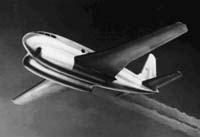 However, the most important starting order was the construction of a few dozen gliders for the various Dutch glider clubs to replace the planes that were robbed by the Germans during the war. Fokker constructed German types: the single-seat E.S.G. and the dual-seat Göppingen Gö-4II trainers as well as the Grunau Baby single-seater. Fokker also constructed a few DSF Olympia high-performance gliders. This order was essential for Fokker since it enabled them to select and train qualified aircraft constructors for their next project! This next project was the S-11 elementary trainer, which was taken into production in 1950. The Fokker management realized soon the importance of the newly introduced jet engine and already in 1946 they presented at the Paris Air Show a model for a future small 17-seat twin-engine jetliner powered by two fuselage-mounted Rolls-Royce Nene engines. Designated as the F-26 Phantom, it was never built, but it gave Fokker designers at least some experience with this new way of propulsion. After the F-26, Fokker started the design of an advanced jet trainer to make future pilots accustomed to jet propulsion and high Mach numbers. What Fokker had in mind was an advanced jet trainer that would be used by air forces within and outside Europe to train their future jet fighter pilots. As we will see in this article Fokker’s success was only limited…
However, the most important starting order was the construction of a few dozen gliders for the various Dutch glider clubs to replace the planes that were robbed by the Germans during the war. Fokker constructed German types: the single-seat E.S.G. and the dual-seat Göppingen Gö-4II trainers as well as the Grunau Baby single-seater. Fokker also constructed a few DSF Olympia high-performance gliders. This order was essential for Fokker since it enabled them to select and train qualified aircraft constructors for their next project! This next project was the S-11 elementary trainer, which was taken into production in 1950. The Fokker management realized soon the importance of the newly introduced jet engine and already in 1946 they presented at the Paris Air Show a model for a future small 17-seat twin-engine jetliner powered by two fuselage-mounted Rolls-Royce Nene engines. Designated as the F-26 Phantom, it was never built, but it gave Fokker designers at least some experience with this new way of propulsion. After the F-26, Fokker started the design of an advanced jet trainer to make future pilots accustomed to jet propulsion and high Mach numbers. What Fokker had in mind was an advanced jet trainer that would be used by air forces within and outside Europe to train their future jet fighter pilots. As we will see in this article Fokker’s success was only limited…
How it started…
 At the final founding of the post-war Fokker aircaft works ‘N.V. Fokker’ on 1 January 1947 and with the Fokker S-11 elementary trainer as first military project, the Fokker management started with the design and development of an advanced jet trainer. Fokker was commissioned with this project by the Dutch institute of aircraft development NVI (Nederlands Instituut voor Vliegtuigontwikkeling). The new jet trainer was intended for the training of future Dutch jet fighter pilots. Under Ontwerp (=design) 240, the Fokker team came up with various design alternatives.Final design selected was Ontwerp 240K and work on a prototype was soon started. Although in the final design a side-by-side layout for the pilots was selected, Fokker also studied an alternative (Ontwerp 204J) with the pilot seats in tandem, but this was finally rejected. Already on the 1949 Paris Air Show Fokker showed a model of the new Machtrainer. Receiving the type designation S-14, it was in fact the first jet-trainer in the world designed as such. All jet trainers at that time were strictly two-seat versions of already existing jet fighters! Since it was intended to make future jet pilots familiar with speeds at high Mach numbers, it was appropriately named the ‘Machtrainer’. Work on the prototype was started in the old Fokker plant in Amsterdam-Noord at the Papaverweg. The fuselage front and centre section with the wings and the tail section were built as separate units which were transported by barge to the Fokker workshop at Schiphol airport for final assembly. Also the engine was installed here. All work was completed on 19 May 1951 when the plane was ready for its first test flight carrying Dutch military markings and the registration K-1.
At the final founding of the post-war Fokker aircaft works ‘N.V. Fokker’ on 1 January 1947 and with the Fokker S-11 elementary trainer as first military project, the Fokker management started with the design and development of an advanced jet trainer. Fokker was commissioned with this project by the Dutch institute of aircraft development NVI (Nederlands Instituut voor Vliegtuigontwikkeling). The new jet trainer was intended for the training of future Dutch jet fighter pilots. Under Ontwerp (=design) 240, the Fokker team came up with various design alternatives.Final design selected was Ontwerp 240K and work on a prototype was soon started. Although in the final design a side-by-side layout for the pilots was selected, Fokker also studied an alternative (Ontwerp 204J) with the pilot seats in tandem, but this was finally rejected. Already on the 1949 Paris Air Show Fokker showed a model of the new Machtrainer. Receiving the type designation S-14, it was in fact the first jet-trainer in the world designed as such. All jet trainers at that time were strictly two-seat versions of already existing jet fighters! Since it was intended to make future jet pilots familiar with speeds at high Mach numbers, it was appropriately named the ‘Machtrainer’. Work on the prototype was started in the old Fokker plant in Amsterdam-Noord at the Papaverweg. The fuselage front and centre section with the wings and the tail section were built as separate units which were transported by barge to the Fokker workshop at Schiphol airport for final assembly. Also the engine was installed here. All work was completed on 19 May 1951 when the plane was ready for its first test flight carrying Dutch military markings and the registration K-1.
Some technical details…
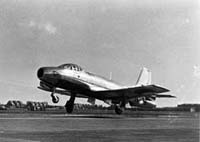 The S-14 external characteristics were short, broad and slightly tapered wings that gave it soon its nickname ‘ the Plank’. Further it featured a fuselage with mostly a circular cross-section and a nose-mounted air intake. Air was split in two ducts going alongside the cockpit section and feeding a centrally placed Rolls Royce Derwent jet engine. The exhaust was fitted in the tail using a long exhaust pipe. Places for instructor and pupil were side-by-side. There was more than enough space behind the two seats for an extra third backseat, although this was never done in practice. Both occupants were seated on Martin-Baker ejection seats. Construction of the S-14 was a semi-monocoque all-metal fuselage and all-metal wings and tail-planes. As a novelty, skin panels were not only riveted at the production model, but also partly glued using a new bonding process developed by Fokker under the supervision of Rob Schliekelman. The bonding process was later used on a far more extensive scale on the F-27 Friendship! Further, the S-14 had a forward-retracting nose-wheel and a wide-track inward retracting main undercarriage. It also had a triple airbrake at the fuselage rear. Instead of the more usual hydraulic systems the S-14 systems were operated pneumatically. The S-14 was designed in such way that maintenance was simple with all internal places easy to access using several inspection hatches. In fact some inspection hatches were so big that a mechanic could easily crawl inside! It was also designed in such way that the engine could be easily replaced in a very short time.
The S-14 external characteristics were short, broad and slightly tapered wings that gave it soon its nickname ‘ the Plank’. Further it featured a fuselage with mostly a circular cross-section and a nose-mounted air intake. Air was split in two ducts going alongside the cockpit section and feeding a centrally placed Rolls Royce Derwent jet engine. The exhaust was fitted in the tail using a long exhaust pipe. Places for instructor and pupil were side-by-side. There was more than enough space behind the two seats for an extra third backseat, although this was never done in practice. Both occupants were seated on Martin-Baker ejection seats. Construction of the S-14 was a semi-monocoque all-metal fuselage and all-metal wings and tail-planes. As a novelty, skin panels were not only riveted at the production model, but also partly glued using a new bonding process developed by Fokker under the supervision of Rob Schliekelman. The bonding process was later used on a far more extensive scale on the F-27 Friendship! Further, the S-14 had a forward-retracting nose-wheel and a wide-track inward retracting main undercarriage. It also had a triple airbrake at the fuselage rear. Instead of the more usual hydraulic systems the S-14 systems were operated pneumatically. The S-14 was designed in such way that maintenance was simple with all internal places easy to access using several inspection hatches. In fact some inspection hatches were so big that a mechanic could easily crawl inside! It was also designed in such way that the engine could be easily replaced in a very short time.
Early flight testing…
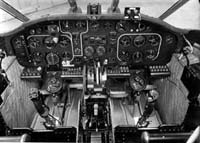 On 19 May 1952, Fokker test pilot Gerben Sonderman made the first flight in the prototype K-1. However, this flight was very short because the main undercarriage wheels could not be fully retracted. Sonderman lowered the wheels again and made a safe landing. After some repairs, Sonderman tried again. Now the wheels retracted perfectly, but on the landing approach Sonderman noticed they refused to come down. He made a perfect belly-landing on the grass alongside the concrete runway and damage was only minimal. After these setbacks, the test program proceeded much better and on 15 June 1951 the S-14 could be proudly presented during the Paris Air Show at the Fokker stand inside the exposition hall, where it attracted much interest. The S-14 was transported to Paris by truck after wings and fuselage were separated. There were no further problems with the flight test program and already in January 1952 the Secretary of State from the Ministry of Defence announced their intention to place an order for 20 productions S-14’s for the Koninklijke Luchtmacht (KLu). This was later that year confirmed by a final order.
On 19 May 1952, Fokker test pilot Gerben Sonderman made the first flight in the prototype K-1. However, this flight was very short because the main undercarriage wheels could not be fully retracted. Sonderman lowered the wheels again and made a safe landing. After some repairs, Sonderman tried again. Now the wheels retracted perfectly, but on the landing approach Sonderman noticed they refused to come down. He made a perfect belly-landing on the grass alongside the concrete runway and damage was only minimal. After these setbacks, the test program proceeded much better and on 15 June 1951 the S-14 could be proudly presented during the Paris Air Show at the Fokker stand inside the exposition hall, where it attracted much interest. The S-14 was transported to Paris by truck after wings and fuselage were separated. There were no further problems with the flight test program and already in January 1952 the Secretary of State from the Ministry of Defence announced their intention to place an order for 20 productions S-14’s for the Koninklijke Luchtmacht (KLu). This was later that year confirmed by a final order.
Test pilot Sonderman had the following remarks on the S-14 flight characteristics:
-at stall the nose drops after heavy buffeting
-the plane was not easy entered into a spin and actually had to be put into it. Normal recover could be obtained within one turn!
-at high Mach number (ca. 0.83) there was an uncontrollable wing drop during heavy buffeting which could be corrected by throttling down and applying the dive brakes.
Operational…

Although Fokker had the intention to supply series S-14’s with the more powerful and more reliable Rolls Royce Nene jet engines, the KLu actually ordered it with the Derwent. A production line for the series S-14 with the slightly more powerful Derwent VIII engine was set up at the new production plant at Schiphol airport. The first KLu trainer, carrying the registration L-1, made its first flight on 15 January 1955. The other machines, with registrations L-2 up to/including L-20 were delivered over the next year with the L-20 as last machine on 14 November 1956. All twenty S-14’s went to the operational airbases Soesterberg, Twenthe, Ypenburg and Woensdrecht where they were used over a period of more than 12 years. However, for advanced fighter training it was not used since the S-14 lacked somewhat in performance and agility for this purpose. Since it was a very docile and easy to fly plane with very safe flying characteristics, it was used as a proficiency trainer for staff officers with a pilot licence to gain flying hours, a role in which it served so well that it was soon nicknamed the ‘Ouwelullen kist (Old person’s crate). The operational career of the S-14 was further not very exciting and over the years only one fatal accident occurred when two senior staff officers, Commodore J.C.J. Vermeulen and lt. col. J. Vonk crashed in the L-7 on 28 May 1964 at the Olifants-polder, Heenvliet near the island of Voorne-Putten. There was earlier another crash with the L-4, but that will be discussed later on. As we will see, only a few were rescued from the scrap-yard! The operational career of the S-14 ended on 5 September 1967 when the last planes were removed from flight status.
The international market…
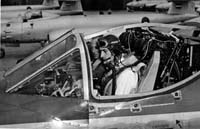 With the final KLu order being realized, Fokker tried to find international customers for the S-14. For this purpose, they used the prototype K-1. Originally, the K-1 flew in a bare metal finish, but this was soon replaced by a very attractive blue, polished metal and yellow colour scheme. Further, the K-1 was fitted with a more powerful Rolls-Royce Nene jet engine, a pressurized cockpit and provision for the use of G-suits. In this form, it flew for the first time on 25 October 1953. During the period it flew as a demonstration plane there were two landing incidents with damage; one on 19.06.1954 and another one on 16.04.1955.For weapon training, Fokker had designed a detachable gun-pack under the fuselage housing two 20 mm Hispano cannons and ammunition. This added an additional weight of 375 kg to the plane.The K-1 has actually flown with the gun-pack mock-up. It is practically unknown that this gun-pack mock-up was made of wood and that some people at Fokker had doubts it would stay in one piece in flight. On hard point under the wings, 8 rocket projectiles or bombs could further be carried. With improved performances, Fokker hoped for orders on the international market. In fact it was demonstrated to officials from many countries like Italy, Chile, France, Spain and other NATO forces. On 15 June 1955, even an interested Yugoslavian team visited the Fokker plant for an S-14 demonstration. All pilots flying the S-14 praised it for its good flight characteristics. Even the U.S.A.F. and the U.S. Navy showed a vivid interest in the improved Mk. II Machtrainer and it is known it was flown by the famous pilot Maj. Chuck Yeager. Another famous pilot flying the S-14 was the German Luftwaffe ace Johannes Steinhoff, who flew it during the visit of German representatives of the European Defence Group. He made a flight in the S-14 on 11 May 1954 and he praised the S-14 for its simple and excellent handling characteristics. It is of particular interest that his claim that the last Messerschmitt fighter he flew during the war was the worst possible combination of bad flying characteristics was explicitly taken up in the Fokker reports!
With the final KLu order being realized, Fokker tried to find international customers for the S-14. For this purpose, they used the prototype K-1. Originally, the K-1 flew in a bare metal finish, but this was soon replaced by a very attractive blue, polished metal and yellow colour scheme. Further, the K-1 was fitted with a more powerful Rolls-Royce Nene jet engine, a pressurized cockpit and provision for the use of G-suits. In this form, it flew for the first time on 25 October 1953. During the period it flew as a demonstration plane there were two landing incidents with damage; one on 19.06.1954 and another one on 16.04.1955.For weapon training, Fokker had designed a detachable gun-pack under the fuselage housing two 20 mm Hispano cannons and ammunition. This added an additional weight of 375 kg to the plane.The K-1 has actually flown with the gun-pack mock-up. It is practically unknown that this gun-pack mock-up was made of wood and that some people at Fokker had doubts it would stay in one piece in flight. On hard point under the wings, 8 rocket projectiles or bombs could further be carried. With improved performances, Fokker hoped for orders on the international market. In fact it was demonstrated to officials from many countries like Italy, Chile, France, Spain and other NATO forces. On 15 June 1955, even an interested Yugoslavian team visited the Fokker plant for an S-14 demonstration. All pilots flying the S-14 praised it for its good flight characteristics. Even the U.S.A.F. and the U.S. Navy showed a vivid interest in the improved Mk. II Machtrainer and it is known it was flown by the famous pilot Maj. Chuck Yeager. Another famous pilot flying the S-14 was the German Luftwaffe ace Johannes Steinhoff, who flew it during the visit of German representatives of the European Defence Group. He made a flight in the S-14 on 11 May 1954 and he praised the S-14 for its simple and excellent handling characteristics. It is of particular interest that his claim that the last Messerschmitt fighter he flew during the war was the worst possible combination of bad flying characteristics was explicitly taken up in the Fokker reports!
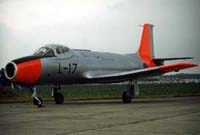 All pilots flying the S-14 praised it for its easy and forgiving flight behavior. Also U.S. pilots flying the S-14 claimed it was much easier to fly than the Lockheed T-33 trainer.
All pilots flying the S-14 praised it for its easy and forgiving flight behavior. Also U.S. pilots flying the S-14 claimed it was much easier to fly than the Lockheed T-33 trainer.
At a planned production of 500, Fokker had already given a price indication of Dfl 495.000 a piece for the Nene version with G-suit adaptation, but without the gun-pack. A set of ground equipments, consisting of a starting compressor, three hydraulic jacks, a set of special tools and cable sets for hoisting the whole plane and the separate fuselage sections and wings was supplied fore an additional Dfl 6000. Fokker had already negotiated the license construction in the U.S.A. with Fairchild. Surprisingly, Fairchild promoted in a company brochure the Dutch version with Rolls Royce Derwent or Nene engine, although it would have been most likely fitted with a U.S. engine if license construction had ever materialized!
Fokker planned an extensive demonstration tour with the S-14 in the United States in 1955. For this purpose, not the K-1, but one of the recent built standard operational KLu machines was used; the L-4. It was shipped by the Norwegian MS Black Heron to the United States. Here, it was made ready at the airport of Fairchild, Hagerstown, Maryland for a flight demonstration for U.S. officers. On 20 October 1955 Gerben Sonderman started with the flight demonstration. However, to the great horror of the spectators, Sonderman did not recover from a spin and the plane crashed. Sonderman was instantly killed on impact at the age of 46. The Netherlands lost a great pilot with Sonderman, who had shot down German planes during the 5-days war in May 1940 with his Fokker G-1. Sonderman was a personal friend of Prince Bernhard and he was famous and popular! The cause of the crash was unclear. The S-14 was in perfect condition and absolutely safe to spin. Spin recovery was very straightforward by applying opposite rudder and pulling the stick backwards once the spinning had stopped. Sonderman had demonstrated this many times before and we can only conclude that he was unconscious or incapacitated at that moment. It is a fact that he had complained to his friend Prince Bernhard that he suffered from severe headaches and Bernhard had advised him not to fly these demonstrations any longer. So the accident could have been caused by Sonderman’s less perfect health condition, although this still remains uncertain. Although Sonderman’s crash was most likely not the main reason, both U.S.A.F. and U.S. Navy did not finally select the S-14 as standard jet trainer. The planned production at Fairchild never materialized.
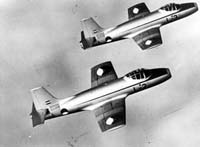 Also in the NATO countries, the S-14 was not sold because U.S. types like the T-33 were offered at very low prices. The last hope for Fokker was Brazil, who placed an option of 50 Machtrainers. Fokker supplied parts for five S-14’s for assembling in Brazil; the rest would have been built locally. The S-14’s to be built in Brazil were planned with Goodyear wheels and brakes instead of the Dunlops as present on the Dutch machines. Unfortunately, also these plans were never realized!
Also in the NATO countries, the S-14 was not sold because U.S. types like the T-33 were offered at very low prices. The last hope for Fokker was Brazil, who placed an option of 50 Machtrainers. Fokker supplied parts for five S-14’s for assembling in Brazil; the rest would have been built locally. The S-14’s to be built in Brazil were planned with Goodyear wheels and brakes instead of the Dunlops as present on the Dutch machines. Unfortunately, also these plans were never realized!
There is still some confusion on the Brazilian S-14. Although it is stated by many sources that ‘none were actually built and flown in Brazil’, this may not be true. In a recent article in the Dutch KLu magazine ‘De Vliegende Hollander’ a former technical officer, Arend Kraag, claimed there was a Brazilian S-14. He literally stated: ‘I was with my brother in Brazil a number of years ago and on an airfield somebody showed me a picture of an S-14 on a flightline in colours of the Brazilian air force with yellow or orange surfaces. I couldn’t believe my eyes!’ Although, this is definitely not a first-hand account, there might be some truth in this story and it could be possible that at least one and maybe even more S-14’s were actually assembled and flown from the parts shipped from the Netherlands!
A second life for the S-14 prototype…
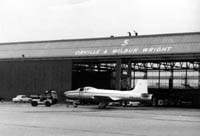 The original K-1 prototype, although carrying military KLu markings, never was on the inventory of the Dutch air force and it’s was also never operational. It was owned and used by Fokker as a demonstration plane. On 24 October 1960 it received the civil registration PH-XIV and on 21 August 1961 it was handed over to the National Aviation Laboratory N.L.L. (later known as N.L.R. when they also started with space research) as an aircraft for calibration test flying. It was used for this task until 1966 when it was replaced by an ex-KLu Hawker Hunter T-7 two-seater. However, the N.L.L. had quite a lot of wishes for modifications until the plane was in their eyes acceptable. Most of them, like fitting optically distortion-free Perspex panels in the cockpit front and side windows were conducted by Fokker. The N.L.L. originally even insisted that the gun-pack should be fitted without its guns as a versatile instrument compartment, but Fokker clearly let them know this was impossible since the mock-up and the final gun-pack had different attachments. Fokker also remarked that the gun-pack was not available because the KLu was not further interested to have it on their operational S-14’s and that further development on this optional part was terminated. The Rijksluchtvaartdienst finally released a Certificate of Airworthiness for the PH-XIV strictly for ‘the use for non-commercial flights’. Further restrictions were a ban to fly it above populated areas. Maximum all-up weight was set at 5800 kg with a VNE of 490 knots (882 km/h) at a critical mach number of 0.85. All flight maneuvers were approved.
The original K-1 prototype, although carrying military KLu markings, never was on the inventory of the Dutch air force and it’s was also never operational. It was owned and used by Fokker as a demonstration plane. On 24 October 1960 it received the civil registration PH-XIV and on 21 August 1961 it was handed over to the National Aviation Laboratory N.L.L. (later known as N.L.R. when they also started with space research) as an aircraft for calibration test flying. It was used for this task until 1966 when it was replaced by an ex-KLu Hawker Hunter T-7 two-seater. However, the N.L.L. had quite a lot of wishes for modifications until the plane was in their eyes acceptable. Most of them, like fitting optically distortion-free Perspex panels in the cockpit front and side windows were conducted by Fokker. The N.L.L. originally even insisted that the gun-pack should be fitted without its guns as a versatile instrument compartment, but Fokker clearly let them know this was impossible since the mock-up and the final gun-pack had different attachments. Fokker also remarked that the gun-pack was not available because the KLu was not further interested to have it on their operational S-14’s and that further development on this optional part was terminated. The Rijksluchtvaartdienst finally released a Certificate of Airworthiness for the PH-XIV strictly for ‘the use for non-commercial flights’. Further restrictions were a ban to fly it above populated areas. Maximum all-up weight was set at 5800 kg with a VNE of 490 knots (882 km/h) at a critical mach number of 0.85. All flight maneuvers were approved.
Museum pieces…
 The K-1 prototype still exists as the PH-XIV. After its retirement it was donated to the Aviodome museum at Schiphol airport. When this museum was closed at the end of the nineties, it was finally moved to the new Aviodrome Museum at Lelystad airport where it is now shown with the wings separated from the fuselage.
The K-1 prototype still exists as the PH-XIV. After its retirement it was donated to the Aviodome museum at Schiphol airport. When this museum was closed at the end of the nineties, it was finally moved to the new Aviodrome Museum at Lelystad airport where it is now shown with the wings separated from the fuselage.
L-11 is now on display in the Militaire Luchtmacht Museum MLM at Soesterberg.
L-17 was preserved to be shown on KLu Open Days. At present it is under complete restoration at Gilze Rijen airbase.
L-18 was used for many years as a gate guard at the Fokker works at Ypenburg until the base and works were closed. It was unfortunately scrapped in 1994.
All other S-14’s were scrapped, although some parts may still exist in various technical collections.
Tips for the model builders:
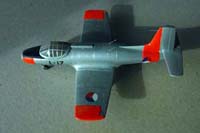 The Dutch IPMS has offered many years ago a resin kit at 1/72 scale of the S-14. It could not only be ordered by IPMS members, but was also offered for sale during IPMS promotional activities. Package was just a simple plastic bag without anything else, but it filled at least a need since all that was released before was a poor quality vacform kit. This was also strictly a Dutch IPMS activity which lasted until the mold broke down. As a service to their customers, IPMS gave with the resin kit at least a double-sided A4 sheet with 3-views and detailed painting instructions! The IPMS resin kit was made in the Czech Republic by Czech Masters, who have re-introduced the kit by themselves in a nice box some years ago. In the new release, KLu decals and painting instructions are included for the L-2, L-6, L-8, L-13 and L-20.
The Dutch IPMS has offered many years ago a resin kit at 1/72 scale of the S-14. It could not only be ordered by IPMS members, but was also offered for sale during IPMS promotional activities. Package was just a simple plastic bag without anything else, but it filled at least a need since all that was released before was a poor quality vacform kit. This was also strictly a Dutch IPMS activity which lasted until the mold broke down. As a service to their customers, IPMS gave with the resin kit at least a double-sided A4 sheet with 3-views and detailed painting instructions! The IPMS resin kit was made in the Czech Republic by Czech Masters, who have re-introduced the kit by themselves in a nice box some years ago. In the new release, KLu decals and painting instructions are included for the L-2, L-6, L-8, L-13 and L-20.
Technical characteristics of the S-14:
R.R. Derwent version R.R. Nene version
Power plant: Rolls-Royce Derwent VIII Rolls-Royce Nene 3 of
of 1575 kg thrust 2315 kg thrust
Dimensions:
-length 13.3 m 13.3 m
-wingspan 12.0 m 12.0 m
-height 4.7 m 4.7 m
-wing surface 31.8 m2 31.8 m2
Weights:
-empty 3765 kg 3970 kg (4043 kg with increased fuel capacity)
-all up 5350 kg 5550 kg ( 5890 kg with increased fuel capacity)
Performances:
-max. speed 730 km/h at 6000m 862 km/h at 3000 m
-service ceiling 11,200 m 12,900 m
-range max. 965 km max. 910 km (1140 km with increased fuel capacity)
(Source: Fokker S-14 brochure of December 1954)
Fokker S-14 armament:
The S-14 prototype K-1 with R.R. Nene engine was presented in company brochures with the possibility to use it as an armed version with a belly gun-pack with two 20 mm cannons with 180 rounds each. The final gun-pack had three fixing points and a locking device. After unlocking it could be lowered on four steel cables using a hand-crank. K-1 actually flew with a wooden gun-pack mock-up attached to its belly, although this did not have the same attachment points as the final gun-pack that was planned for the operational version.
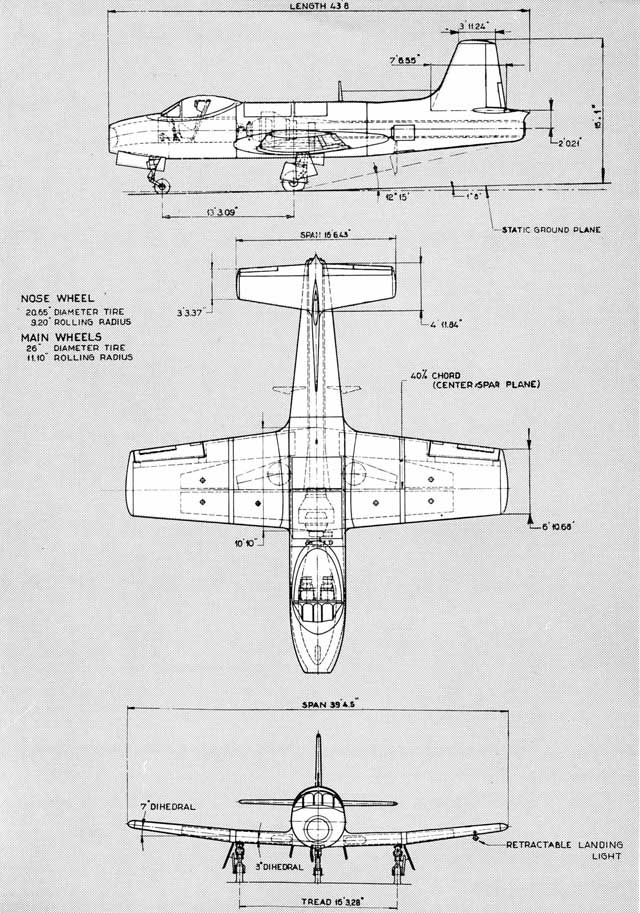
Based on Fokker documents present at the Militaire Luchtvaart Museum at Soesterberg and the Aviodrome Museum at Lelystad, we may conclude that on the S-14’s operational at the KLu the provisions for mounting the gun-packs were never fitted. Except for the hoisting cables, locking device and attachment points, other internal equipment for the gun-pack included a nose-mounted gun camera and two gyroscopic gun-sights. Also these were never fitted in the KLu S-14’s. From other Fokker documents, it is clear the development of the gun-pack was terminated at a moment the prototype gun-pack was still under construction. The KLu had initially ordered 20 gun-packs for the S-14, but in fact only the unfinished prototype was actually built and supplied, although it was never used. The hardpoints under the wings for possible attachment of rockets were also never fitted on the KLu S-14’s or on the K-1 ‘Nene’ demonstrator.
Nico Braas
Literature:
Hugo Hooftman, Van Brik tot Starfighter Part 2. In de schietstoel, La Rivière & Voorhoeve – the Netherlands (1962)
Arno Marchand, ‘De Plank’ , De Vliegende Hollander, Jan. 2007, 10-11
Wim Schoenmaker, De Fokker S-14 Machtrainer, Maandblad Luchtvaart No. 6 (June 1988), 182-187
Lt. Col. C. Sipkes et al., Ervaringen van de Koninklijke Luchtmacht met de Fokker-vliegtuigen S-11 en S-14, Report Koninklijke Luchtmacht 20 November 1958
With special thanks to Flash Aviation, Eindhoven
All images from author collection. This article is extract from the large material and book in preparation by the author and the Let let Let team.







I have just read the brief but very interesting article about the Fokker S.14 and its history.
As a Brazilian aviation historian, my interest on the Fokker S.14 stems from the role it played in the 7 August 1953 agreement signed by the Brazilian Air Ministry and Fokker’s Brazilian subsidiary – Fokker Indústria Aeronáutica S/A.
Yet it was with some surprise to note that there is still a persistent notion that a given number of these jet trainers were assembled and flown in Brazil. There is considerable circumstantial evidence pointing towards the delivery of S.14 components and sub-assemblies to Fokker Indústria Aeronáutica S/A and earmarked for the assembly of the first five S.14s for the Brazilian AF. Yet there is no evidence that a single airframe was ever assembled from these components. Indeed, barring personnel that performed flight evaluation work in the Netherlands in May of 1952, no Brazilian AF flight personnel ever flew the S.14.
Over the years this version has apparently gained credence in view of a single photograph portraying a Fokker S.14 in Brazilian AF markings.Although I have never had personal access to the photograph, a handful of retired Brazilian AF officers and aviation buffs have stated that they have seen such a photograph in a local general interest publication of the period.
It would seem reasonable that a Fokker S.14 did indeed receive Brazilian AF markings for publicity purposes – albeit in the Netherlands.
It should be mentioned that sometime between 1953 and his death in the United States, Gerben Sonderman performed a number of displays with a Fokker S.11 – possibly airframe c/n 6628, which remained in Brazil. It has been repeatedly speculated that Sonderman performed a series of flight displays with a Fokker S.14 in Rio de Janeiro, but there is no proof that this actually occurred.
Best regards
Jackson Flores Jr.
Hello,
I just red this article about the Fokker S-14.
I recently found the hood of the cockpit from a Fokker S 14 in somebody,s front yard.
It was just laying there, so i purchached it.
I don,t have a purpose for it, but i couldn,t leave it there.
Iff somebody is interested in it, you can contact me.
theunderbird@quicknet.nl
Greatings Theun